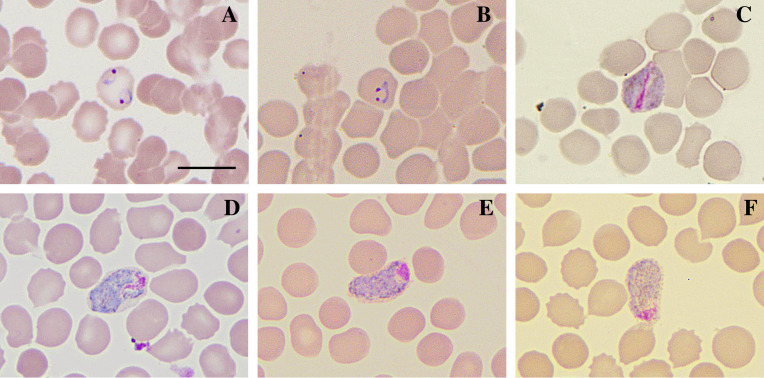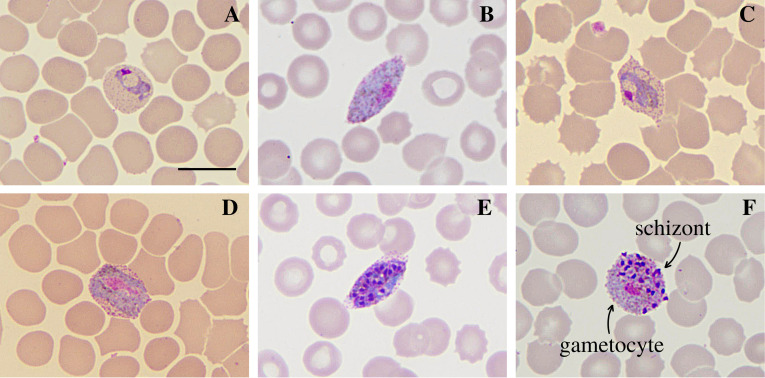Morphological atypia and molecular profile of Plasmodium vivax: Findings from an outbreak in the Brazilian Amazon.
IF 2.3
2区 医学
Q2 PARASITOLOGY
引用次数: 0
Abstract
This study aimed to perform morphological and molecular analyses of parasites isolated from the blood of malaria-infected individuals during an outbreak in the Microregion of Cametá, State of Pará, Brazilian Amazon. A total of 260 positive samples were identified by microscopy as Plasmodium vivax; however, in three samples, forms considered unusual for the species were found and defined as morphological atypia of P. vivax. Single P. vivax infection was confirmed by qPCR in all samples. Among 256 genotyped samples, the VK247 genotype alone was identified in 255 samples, and the VK210 genotype was found in only one. The study showed that this malaria outbreak was caused by the etiological agent P. vivax, and for the first time, morphological atypia was described in isolates circulating in Brazil. Likewise, for the first time, the VK247 genotype was detected predominantly in single infections in an area of the State of Pará, which may suggest a greater circulation of the genotype in the region.



间日疟原虫的形态异型性和分子特征:巴西亚马逊地区爆发的研究结果。
这项研究旨在对巴西亚马逊州帕拉州卡梅塔微区爆发疟疾期间从疟疾感染者血液中分离出的寄生虫进行形态学和分子分析。共有260个阳性样本通过显微镜鉴定为间日疟原虫;然而,在三个样本中,发现了被认为对该物种不寻常的形态,并将其定义为间日疟原虫的形态异型性。通过qPCR在所有样本中确认了间日疟原虫的单一感染。在256个基因型样本中,仅在255个样本中鉴定出VK247基因型,仅在一个样本中发现VK210基因型。研究表明,这次疟疾爆发是由病原体间日疟原虫引起的,在巴西流行的分离株中首次描述了形态异型性。同样,VK247基因型首次主要在帕拉州的一个地区的单一感染中检测到,这可能表明该基因型在该地区的传播更大。
本文章由计算机程序翻译,如有差异,请以英文原文为准。
求助全文
约1分钟内获得全文
求助全文
来源期刊

Parasite
医学-寄生虫学
CiteScore
5.50
自引率
6.90%
发文量
49
审稿时长
3 months
期刊介绍:
Parasite is an international open-access, peer-reviewed, online journal publishing high quality papers on all aspects of human and animal parasitology. Reviews, articles and short notes may be submitted. Fields include, but are not limited to: general, medical and veterinary parasitology; morphology, including ultrastructure; parasite systematics, including entomology, acarology, helminthology and protistology, and molecular analyses; molecular biology and biochemistry; immunology of parasitic diseases; host-parasite relationships; ecology and life history of parasites; epidemiology; therapeutics; new diagnostic tools.
All papers in Parasite are published in English. Manuscripts should have a broad interest and must not have been published or submitted elsewhere. No limit is imposed on the length of manuscripts, but they should be concisely written. Papers of limited interest such as case reports, epidemiological studies in punctual areas, isolated new geographical records, and systematic descriptions of single species will generally not be accepted, but might be considered if the authors succeed in demonstrating their interest.
 求助内容:
求助内容: 应助结果提醒方式:
应助结果提醒方式:


